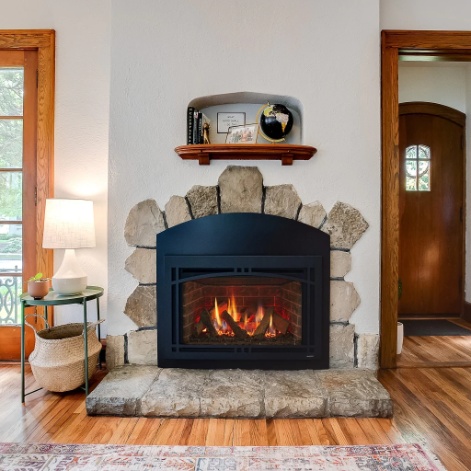Table of Contents
Are you interested in understanding what a face cord of wood is?
It can be advantageous for you in many ways.
This detailed guide will cover all the necessary information.
Discover the measurements and types of wood typically used in face cords.
We will also discuss the advantages of utilizing one and recommendations for correctly storing and calculating the required amount.
This article aims to equip you with all the essential details to maximize the benefits of your face cord.
Whether it’s for heating, cooking, or any other purposes, we’ve got you covered!
Understanding a Face Cord of Wood
Understanding a face cord of wood involves grasping the concept of a specific measure of firewood.
This measure is typically used for heating or fireplace purposes.
A face cord is commonly defined as a stacked pile of wood that has specific dimensions, often referred to as a cord of wood.
The standard dimensions of a face cord include a length of 8 feet, a height of 4 feet, and varying widths depending on the size of the individual pieces of wood.
These widths typically range from 16 to 24 inches.
It is essential to note that a face cord is different from a full cord of wood.
A full cord is a larger measure equal to a stack that is 8 feet long, 4 feet high, and 4 feet wide, providing a total of 128 cubic feet of firewood.
Stacked wood, whether in face cord or full cord measurements, is crucial for efficient storage, transportation, and utilization of firewood for heating purposes.
Definition and Measurements
In understanding the measurement of a face cord of wood, it is important to consider the specific dimensions that define this unit.
A standard face cord is typically characterized by a length of 8 feet, a height of 4 feet, and a variable width based on the wood cut.
Maintaining precision in stacking wood within these dimensions is critical.
It directly influences the overall capacity of firewood that can be accommodated in a face cord.
Even minor variations in stacking or dimensions can lead to notable differences in the volume of wood that can be neatly arranged within the face cord.
Types of Wood Used in Face Cords
When considering face cords of wood, the types of wood used play a significant role in the burning quality and efficiency of the firewood.
Common choices include hardwoods and softwoods, each with distinct characteristics and benefits.
Hardwoods such as oak, hickory, and maple are known for their dense nature.
This allows them to burn hotter and longer than softwoods like pine or cedar.
Softwoods ignite quickly, making them ideal for kindling.
Hardwoods generally produce less creosote buildup in chimneys compared to softwoods.
Seasoning wood by letting it dry properly is crucial to ensure efficient burning.
Green or wet wood can lead to poor combustion and excess smoke. Maintaining the optimal moisture content, typically around 15-20%, is essential for a clean and steady fire.
Popular Choices and Characteristics
When considering the types of wood used in face cords, hardwoods such as oak and maple are commonly chosen for their dense composition and longer burn time.
In contrast, softwoods like pine and spruce are appreciated for their quick ignition and pleasant scent.
Hardwoods are recognized for their ability to maintain a slow and consistent burn.
This makes them well-suited for sustaining a fire over extended periods, particularly during cold winter evenings.
Conversely, softwoods are effective as kindling, igniting rapidly and producing a crackling sound that contributes to the atmosphere.
Regardless of the wood type, proper seasoning is crucial to ensure optimal burning efficiency.
Seasoning involves allowing the wood to dry out, reducing its moisture content, and improving its combustibility.
Benefits of Using a Face Cord
Using a face cord of wood has several advantages.
It provides reliable heating in colder seasons, saves costs compared to other fuels, and creates a traditional fireplace atmosphere.
The quality of firewood obtained in a face cord ensures efficient and consistent burning.
This results in a more pleasant heating experience.
Opting for a face cord can also be a cost-effective choice in the long run.
It generally offers a higher volume of wood compared to the standard cord measurement.
It is crucial to remember that regular maintenance of your fireplace and chimney is essential.
This maximizes the efficiency of your face cord usage.
By ensuring proper upkeep and cleaning, you not only extend the lifespan of your heating system but also enhance safety and cost-effectiveness in the long term.
Efficiency and Cost Savings
The efficiency and cost savings associated with using a face cord of wood stem from its ability to provide consistent and effective heating.
It also offers a sustainable and renewable resource.
The quality of firewood in a face cord directly impacts its efficiency and longevity.
When considering heating needs, opting for a face cord of wood helps in reducing energy bills and lessening the environmental impact.
Firewood remains a popular choice for many households due to its affordability and accessibility.
Investing in high-quality firewood ensures that the heat produced is efficient and long-lasting.
This ultimately leads to significant cost savings over time.
It’s crucial to understand that using well-seasoned and properly stored firewood guarantees optimal combustion.
This minimizes wastage and maximizes heat output for a cozy and economical heating solution.
How to Properly Store a Face Cord
Properly storing a face cord of wood is crucial to maintain its quality and ensure efficient burning.
Effective storage involves utilizing strategic wood stacking methods, suitable shelter or storage solutions, and adherence to essential firewood storage guidelines.
When stacking firewood in a crisscross pattern, better airflow is achieved.
This aids in the drying process of the wood and prevents mold growth.
Elevating the woodpile off the ground using pallets or a rack is also recommended to reduce moisture contact.
To shield the wood from rain while still allowing air circulation, cover the top of the stack with a tarp and leave the sides open.
Regularly checking the wood for signs of pests and promptly removing any infested pieces is vital for preserving the quality of firewood.
Tips for Keeping Wood Dry and Protected
Maintaining the quality and usability of a face cord requires keeping wood dry and protected.
Properly seasoning the firewood, ensuring adequate drying time, and using effective stacking methods are essential for optimal wood storage conditions.
Seasoning firewood involves allowing the wood to dry to reduce its moisture content properly.
This process typically takes six months to a year, depending on the type of wood.
To expedite drying, consider splitting the logs to expose more surface area to air.
Storing firewood off the ground on a raised platform or pallet can help prevent moisture absorption from the soil.
Proper ventilation is crucial to prevent mold growth, so avoid fully covering the firewood. Allow air to circulate around the woodpile.
Using a Face Cord for Different Purposes
A face cord of wood has multiple uses beyond traditional heating.
It can fuel a fireplace for cozy ambiance, be used for cooking meals on wood-burning stoves, or for outdoor activities like bonfires or camping.
Apart from these common uses, wood from a face cord can also be creatively incorporated into various DIY projects and crafts.
This includes constructing wooden furniture or decorative pieces.
The crackling sound of burning wood creates a peaceful atmosphere indoors, often associated with relaxation and rustic charm.
Additionally, the process of chopping and stacking wood can be a physically rewarding task.
It offers exercise and a sense of achievement.
Whether it’s providing warmth during winter evenings or adding a natural element to a backyard gathering, a face cord of wood is a versatile resource suitable for both practical and recreational activities.
Heating, Cooking, and Other Uses
When considering the uses of a face cord of wood, its primary functions include providing efficient heating for residential spaces.
It also facilitates wood-burning for cooking purposes and contributes to the ambiance of indoor and outdoor settings through fireplace usage.
The versatility of a face cord extends beyond mere warmth provision.
It makes it a vital component in various activities.
In culinary traditions, wood-burning stoves play a crucial role in imparting a distinct flavor to dishes.
This enhances the overall taste and experience.
The crackling sound and flickering flames of a firewood-fueled fireplace add a cozy and inviting atmosphere to living rooms, cabins, or outdoor patios.
The natural aesthetics of stacked firewood also bring a rustic charm to interior decor.
It blends seamlessly with both traditional and contemporary design schemes.
Calculating the Amount of Wood You Need
Determining how much wood you need requires considering factors such as the cubic footage of the space, the weight of the firewood, and the current firewood prices and availability in your region.
To calculate the necessary amount of wood, take a strategic approach.
Start by measuring the dimensions of the area you plan to heat.
Use these measurements to determine the cubic footage of the space.
This gives an estimate of the wood needed to maintain a comfortable temperature.
Additionally, consider the weight of the firewood.
Denser wood burns for longer periods.
It’s also important to factor in the cost.
Analyzing the pricing and availability of firewood in your region can assist in making well-informed decisions about wood procurement.
This ensures the best value for money.
Factors to Consider for Estimating Usage
Several factors are involved in estimating the amount of wood needed.
These include the volume of space to heat in cubic feet, the weight of firewood suitable for efficient burning, current market prices, and the seasonal availability of firewood resources.
Considering cubic footage is important as it determines the heating capacity and the amount of firewood needed to maintain a comfortable temperature.
Understanding the weight of the firewood is crucial for optimizing the burning process and ensuring efficient heat output.
Pricing also plays a significant role in budgeting for firewood supplies.
Costs can vary based on location, type of wood, and market demand.
Seasonal fluctuations in firewood availability require careful planning.
This ensures a continuous and adequate supply throughout the year, particularly during peak heating seasons.
Frequently Asked Questions
1. What is a face cord of wood?
A face cord of wood is a unit of measurement used to describe a stack of firewood. It typically consists of a stack of logs that is 4 feet high, 8 feet long, and 16 inches deep.
2. How much wood does a face cord contain?
A face cord of wood contains a volume of 1/3 of a cord, which is equivalent to approximately 1,233 cubic feet or 16 to 24 cubic meters of wood, depending on the size of the logs.
3. How much does a face cord weigh?
The weight of a face cord of wood varies depending on the type of wood and its moisture content, averaging between 2,000 to 3,000 pounds.
4. What is the difference between a face cord and a full cord of wood?
A full cord of wood is a larger measurement consisting of a stack that is 4 feet high, 8 feet long, and 4 feet deep. A face cord is only 16 inches deep, meaning a full cord contains 3 face cords.
5. How much firewood does a face cord produce?
A face cord of wood can produce approximately 70 to 100 fires, depending on the size of the logs and how efficiently they are burned.
6. What kind of wood is best for a face cord?
The best type of wood for a face cord depends on personal preference and intended use. Hardwoods like oak, maple, and ash provide long-lasting and hot fires, while softwoods such as pine and cedar are good for quick burning fires.
7. How can I properly store a face cord of wood?
To properly store a face cord of wood, stack it off the ground using pallets for airflow, cover the top with a tarp while leaving sides open for ventilation, and regularly check for pest infestation.
8. What are the advantages of using a face cord of wood?
Using a face cord of wood offers efficient heating, cost savings compared to other fuels, and creates a cozy fireplace ambiance, making it a popular choice for many households.
9. How do I calculate the amount of wood I need?
To calculate the amount of wood needed, measure the cubic feet of the space to be heated, consider the weight of firewood for effective burning, and analyze the current prices and availability in your region.
10. Can a face cord of wood be used for purposes other than heating?
Yes, a face cord of wood can be used for cooking meals on wood-burning stoves, outdoor activities, bonfires, and various DIY projects, making it a versatile resource.
Latest Articles

What Is An NG (Natural Gas) Indicator And Why You Need It For Your Fireplace
Table of Contents1 Understanding Natural Gas Fireplaces2 What is an NG Indicator?3 Importance of NG Indicators for Safety4 Types of NG Indicators5 Installation and Maintenance of NG Indicators6 Signs of a Faulty NG Indicator7 Frequently Asked Questions Natural gas fireplaces are a favored option among numerous homeowners due to their convenience and effectiveness. But, what is an NG (Natural Gas) indicator and why you need it for your fireplace? It is imperative to comprehend how they function and the significance of having an NG (Natural Gas) indicator for safety purposes. This article delves into the definition and significance of NG indicators. We will discuss the potential hazards associated with the absence of one and the various types of indicators accessible. Also, we will discuss installation and maintenance recommendations, and methods to recognize and rectify issues with malfunctioning indicators. Stay well-informed and ensure the safety of your home by referring to this exhaustive guide. Understanding Natural Gas Fireplaces Natural gas fireplaces serve as an efficient and convenient heating option for numerous households. They utilize natural gas as a fuel source to deliver consistent warmth and ambiance. How They Work and Why They Need NG Indicators The operation of natural gas fireplaces involves igniting natural gas to generate heat. This process requires diligent monitoring to ensure both safety and efficiency, a task facilitated by the use of NG indicators. NG indicators play a critical role in detecting potential gas leaks. They enable residents to promptly address and mitigate any associated hazards. Through continuous monitoring of gas levels and providing timely warnings and alerts, NG indicators uphold a secure indoor environment. It is imperative to ensure that these indicators function properly to facilitate the effective operation of natural gas fireplaces. This helps mitigate the inherent risks linked to gas leaks. What is an NG Indicator? An NG indicator is a specialized device equipped with advanced sensors and technology. It is specifically designed to detect natural gas leaks and monitor gas pressure in appliances, such as fireplaces. Definition and Purpose The NG indicator functions as a detector that monitors gas appliances for potential leaks. It provides essential functionality to ensure safety in households utilizing natural gas. These detectors play a crucial role in protecting residences by notifying occupants of dangerous gas leaks long before they escalate into perilous situations. Through continuous monitoring of gas levels in the vicinity, NG indicators offer an additional layer of protection. This is particularly important in properties that rely on gas-operated fireplaces or stoves. These devices not only help avert potential disasters but also enhance the overall peace of mind of homeowners. They assure them that their living spaces are equipped with reliable safety features. Importance of NG Indicators for Safety Natural gas indicators are essential for maintaining safety in households equipped with natural gas appliances. These devices serve as a proactive measure to promptly detect gas leaks. This offers homeowners a sense of security and assurance. Potential Dangers of Not Having an NG Indicator The absence of an NG indicator in residences equipped with natural gas appliances can pose significant hazards. This includes the risk of undetected gas leaks , carbon monoxide poisoning , and pilot outages that may lead to dangerous situations. These potential risks can profoundly impact indoor air quality. They directly influence the health and safety of individuals residing in the household. Undetected gas leaks can go unnoticed, gradually permeating the air and creating a potentially explosive environment. Insufficient ventilation from undetected exposure to carbon monoxide can lead to serious health complications. These range from mild symptoms such as dizziness to fatal poisoning. Without proper monitoring from an NG indicator, families are left susceptible to these concealed threats. This underscores the critical importance of implementing proactive measures to mitigate such risks. Types of NG Indicators Indicators for Natural Gas (NG) are available in diverse types. Each presents distinct detection capabilities tailored to specific requirements, encompassing both manual and automated alternatives. Manual vs. Automatic Indicators Manual NG indicators require user intervention for monitoring gas levels and identifying leaks. On the other hand, automatic indicators employ sophisticated technology to deliver continuous, real-time monitoring. This heightened efficiency and oversight enhance safety protocols. Conventional manual indicators rely on individuals to physically inspect and evaluate gas levels periodically. This renders them more susceptible to human errors. Conversely, automatic indicators feature sensors capable of promptly detecting even the most minute fluctuations in gas levels. This establishes a more dependable and precise monitoring mechanism. Automatic indicators can activate alerts and shut-off systems upon detecting a leak. This ensures immediate action to avert potential hazards. This advanced technology enhances safety protocols and instills a sense of command and assurance among users. Installation and Maintenance of NG Indicators The reliable and accurate performance of NG indicators necessitates proper installation and consistent maintenance. This often entails professional installation and adherence to recommended service guidelines. Proper Installation and Regular Maintenance Tips The proper installation of NG indicators involves adhering to the specifications in the user manual. Maintenance protocols entail strict adherence to a predetermined maintenance schedule to ensure sustained operational efficiency. During the installation phase, it is imperative to verify that the NG indicators are securely affixed in the designated location as stipulated by the manufacturer. Crucial steps include confirming power source compatibility and ensuring proper grounding of the device to optimize performance. Calibration of the indicator must be executed meticulously to ensure precise readings. Regarding maintenance, essential practices include regular inspection for signs of wear, thorough cleaning of the indicator components, and routine functionality tests. By allocating time to a consistent maintenance regimen, the NG indicator can operate with optimal efficiency over an extended duration. Signs of a Faulty NG Indicator Recognizing indicators of a malfunctioning NG indicator is essential for upholding safety and performance standards. Inaccuracies and detection issues can undermine the efficacy of these devices. Identifying and Addressing Issues The process of identifying and addressing issues related to NG (natural gas) indicators requires a systematic troubleshooting approach. This ensures their optimal performance

What You Need To Know About Gas Log Set Safety And Installation Considerations
Table of Contents1 Understanding Gas Log Sets2 Safety Considerations for Gas Log Sets3 Installation Guidelines for Gas Log Sets4 Maintaining and Troubleshooting Gas Log Sets5 Frequently Asked Questions Gas log sets are a favored option among homeowners seeking to enjoy the comfort and atmosphere of a conventional fireplace without the inconvenience of wood. This article tells you what you need to know about gas log set safety and installation considerations. Before incorporating one into your residence, it is imperative to understand the safety considerations associated with their use. This discussion delves into the potential hazards linked with gas log sets. It presents crucial precautions to uphold the safety of your home. Also, it outlines proper installation procedures and offers insight into common errors to avoid. Finally, it provides advice on maintenance and troubleshooting. Gain comprehensive knowledge on gas log set safety and installation considerations. Understanding Gas Log Sets Comprehending gas log sets is essential for individuals seeking to elevate their fireplace experience, and for gas lag set safety and installation. These heating appliances can operate on either natural gas or propane. In addition, they are available in a range of styles, including vented, ventless, and vent-free options. They provide an array of benefits and customization opportunities through various fireplace accessories. What are Gas Log Sets? Gas log sets are meticulously crafted artificial logs. They are designed to imitate the appearance and functionality of authentic wood logs within fireplaces. These gas log sets typically consist of ceramic or refractory concrete logs that have been skillfully molded and painted. This allows them to replicate the natural grain and texture of real wood. The logs are arranged in various configurations within the fireplace. They establish a realistic and welcoming ambiance. In addition to the logs, gas log sets often include fireplace accessories such as glowing embers. Accessories also include decorative stones, and even pine cones to enhance the overall aesthetic appeal. Homeowners can select from an array of placement options. These include traditional wood stack, cascading driftwood, or a contemporary geometric arrangement. Homeowners can align their preferred style and design preferences. Safety Considerations for Gas Log Sets Safety considerations for gas log sets are of utmost importance to guarantee a secure and pleasant fireplace experience. It is essential to address potential hazards such as carbon monoxide exposure, gas leaks, and fire safety to maintain a safe environment for homeowners. Potential Hazards and Precautions Gas log sets come with potential hazards that must be taken seriously, including the risks of gas leaks, carbon monoxide poisoning, and fire incidents. It is imperative to establish and adhere to rigorous safety measures to ensure the well-being of individuals and properties involved in the use of gas log sets. Gas leaks represent a significant hazard when utilizing gas log sets. They can result in the accumulation of combustible gas within the premises, heightening the possibility of explosions or fires. Carbon monoxide, an insidious gas generated during incomplete combustion, poses a grave threat due to its colorless and odorless nature, making it undetectable without proper monitoring. To address these risks effectively, it is vital to install carbon monoxide detectors and gas leak sensors in the vicinity of the gas logs. Routine maintenance checks on the gas log system, including cleaning and inspection procedures, are critical to ensure safe operations and the prompt identification of potential issues. In case of a gas leak or suspected presence of carbon monoxide, immediate evacuation of the affected area is paramount, followed by prompt contact with emergency services. Recognizing the distinct odor of rotten eggs associated with natural gas can serve as an early warning sign, prompting swift actions to avert any potential accidents. Installation Guidelines for Gas Log Sets The installation of a gas log set necessitates meticulous planning and strict adherence to specific guidelines. This includes verifying a secure gas connection, ensuring proper gas lines are in place, and complying with local building codes. Often, the complexity of these requirements may require the expertise of a certified technician. Proper Installation Techniques The appropriate installation procedures for gas log sets involve the secure connection of gas lines, meticulous adherence to installation manuals, and strict compliance with local building codes. It is imperative to prioritize the guarantee of secure gas connections to avert leaks and potential safety hazards. During the installation of gas log sets, utilizing suitable sealants and fittings is essential to establish a tightly sealed connection. The correct installation of gas lines is critical for both the safety and operational efficacy of the gas log set. Reference to the installation manual is highly advisable for detailed, step-by-step guidance to prevent inaccuracies and ensure the successful establishment of the gas log set. Consistently adhering to building codes and regulations upholds safety standards. Seeking guidance and confirmation from a certified technician before and after installation can offer invaluable support and assurance throughout the process. Common Installation Mistakes to Avoid It is imperative to avoid common installation errors to ensure the secure and effective operation of gas log sets. This includes verifying proper gas connections and compliance with building codes. Improper gas connections can result in leaks and potential hazards, underscoring the importance of verifying the tightness and correct alignment of all fittings. Failure to adhere to building codes can lead to structural complications, penalties for non-compliance, or even safety concerns. To prevent these oversights, it is advised to consult the manufacturer’s installation guidelines and strictly adhere to local regulations. Engaging a certified technician for the installation of gas log sets guarantees that the procedure is carried out accurately and securely. This provides assurance that the system is functioning as intended. Maintaining and Troubleshooting Gas Log Sets Regular maintenance and troubleshooting of gas log sets are imperative to uphold their optimal performance and safety. This includes thorough examination of the pilot light, pilot assembly, and other gas appliances to preserve heating efficiency and promptly resolve any arising issues. Tips for Maintenance and Repair Ensuring the proper maintenance of your gas log set necessitates conducting

Key Considerations For Using Compressed Liquid Propane In Fireplace Installation
Table of Contents1 What is Compressed Liquid Propane?2 Benefits of Using Compressed Liquid Propane in Fireplaces3 Safety Precautions for Installing Compressed Liquid Propane Fireplaces4 Installation Process for Compressed Liquid Propane Fireplaces5 Maintenance and Care for Compressed Liquid Propane Fireplaces6 Alternative Fuel Options for Fireplaces7 Frequently Asked Questions If you are contemplating the use of compressed liquid propane in your fireplace installation, this discussion will delve into the advantages of adopting this alternative fuel option. These benefits include enhanced efficiency, cost savings, and important safety precautions to consider. Furthermore, a detailed step-by-step guide on the installation process will be provided, along with recommendations for maintenance and care. A comparison of various fuel options for fireplaces will also be conducted to assist you in making an informed decision. We encourage you to stay engaged to gain insights into optimizing your fireplace’s capabilities with compressed liquid propane. What is Compressed Liquid Propane? Compressed Liquid Propane is a versatile energy source contained in a high-pressure propane tank. It finds extensive utility in both residential and commercial settings, prominently including fireplaces. Recognized for its convenience and efficiency, Compressed Liquid Propane emerges as a favored option for heating residential spaces and facilitating culinary pursuits across various environments. Additionally, it serves as a viable fuel substitute in vehicular contexts, portable cooktops, and outdoor grilling scenarios due to its propensity for clean combustion. The attribute of portability, coupled with ease of storage, positions Compressed Liquid Propane as an optimal energy source for individuals residing off the conventional grid. It is also great for engaging in outdoor activities such as camping and recreational vehicle (RV) travel. Moreover, the high energy density inherent to Compressed Liquid Propane renders it a dependable choice for sustaining generators during instances of power disruptions. Benefits of Using Compressed Liquid Propane in Fireplaces Utilizing Compressed Liquid Propane for fireplace installation presents several benefits. These include enhanced fuel efficiency, convenience, cost-effectiveness, and a favorable environmental footprint. These attributes render it a recommended option for heating solutions, applicable to both on-grid and off-grid settings. Efficiency and Cost Savings The utilization of Compressed Liquid Propane in fireplaces offers significant advantages, notably in terms of high fuel efficiency and cost-effectiveness. These attributes are underscored by the exceptional BTU rating and overall heating efficiency of Compressed Liquid Propane. The elevated fuel efficiency exhibited by Compressed Liquid Propane fireplaces necessitates less fuel to generate the same level of heat compared to traditional wood-burning fireplaces or electric heating systems. Consequently, homeowners can realize cost savings on their heating expenditures over an extended period. Moreover, the clean-burning characteristics of propane minimize maintenance costs linked to soot and ash cleanup. This further enhances the cost-effectiveness of employing propane fireplaces. Safety Precautions for Installing Compressed Liquid Propane Fireplaces Ensuring safety is of utmost importance during the installation of Compressed Liquid Propane fireplaces. This requires strict adherence to safety regulations, meticulous attention to proper ventilation requirements, careful control of ignition sources, and the incorporation of carbon monoxide and gas leak detection systems. Important Safety Measures Essential safety protocols for the installation of Compressed Liquid Propane fireplaces encompass adherence to fire safety regulations. Engaging in professional assessments and employing sophisticated gas leak and carbon monoxide detection mechanisms is crucial. Professional evaluations play a critical role in identifying any prospective hazards or irregularities within the fireplace infrastructure. These assessments are vital in ensuring the operational integrity of all components and compliance with safety protocols. Routine inspections serve to forestall potential fire incidents, gas discharges, or carbon monoxide emissions that could pose significant threats to both the property and individuals in the vicinity. The utilization of advanced gas leak and carbon monoxide detection systems serves as an additional safeguard by promptly notifying occupants of any elevated levels of these hazardous gases. Installation Process for Compressed Liquid Propane Fireplaces The installation procedure for Compressed Liquid Propane fireplaces encompasses several critical steps. These include: Adhering to installation guidelines Correctly positioning the propane tank Ensuring precise gas line installation Optimizing heat output Monitoring pressure regulation Establishing the pilot light Step-by-Step Guide The installation process of Compressed Liquid Propane fireplaces involves a systematic approach. This begins with the construction of the firebox, followed by the installation of the gas control valve, setup of the ignition system, design of the flue, and verification of a suitable combustion air supply. The construction of the firebox assumes critical importance as it serves as the foundation of the fireplace structure. It securely holds the combustible materials in place. Subsequently, the gas control valve plays a key role in managing the propane flow, guaranteeing safe and efficient operation. The installation of the ignition system facilitates convenient and reliable fire initiation. Designing the flue is a necessary step to direct exhaust gases outside, thus preventing their accumulation indoors. Moreover, ensuring a proper combustion air supply is essential to sustain optimal burning conditions and enhance fuel consumption efficiency. Each component contributes significantly to the functionality and safety of the fireplace installation process. This underscores the importance of meticulous attention to detail and adherence to established protocols. Maintenance and Care for Compressed Liquid Propane Fireplaces Consistent maintenance and attention to Compressed Liquid Propane fireplaces are imperative to guarantee their optimal functionality. This includes adherence to prescribed maintenance protocols, regular chimney upkeep, prevention of soot accumulation, and scheduling of routine propane deliveries and professional inspections. Tips for Keeping Your Fireplace in Good Condition For the maintenance of your Compressed Liquid Propane fireplace, it is essential to conduct regular checks on ignition sources. Monitor flame appearance, clean the gas burner and pilot assembly, and verify the correct operation of the safety shut-off valve. The inspection of ignition sources requires a detailed examination of the electronic igniter. This helps identify any signs of damage or corrosion and ensures proper sparking upon activation. Monitoring flame appearance involves observing a consistent blue flame with minimal flickering, which signifies efficient combustion. Cleaning the gas burner and pilot assembly can be performed using a soft brush or compressed air to eliminate any dirt or debris that may


















































































